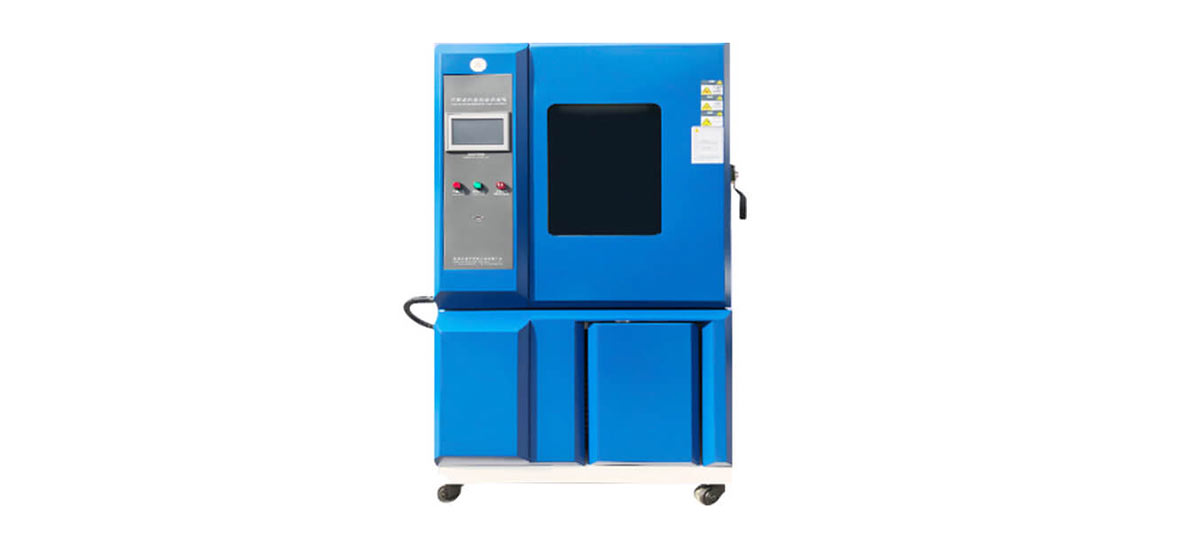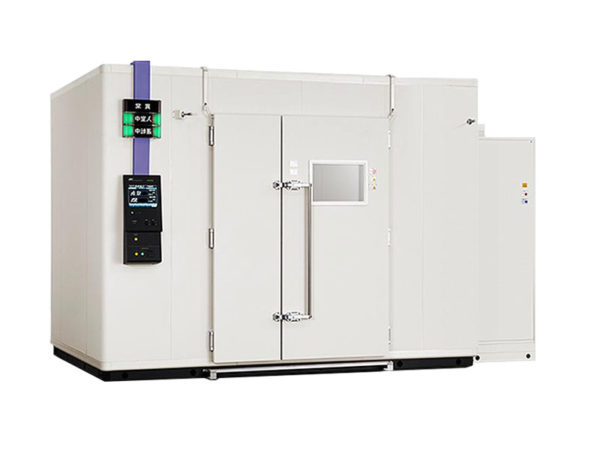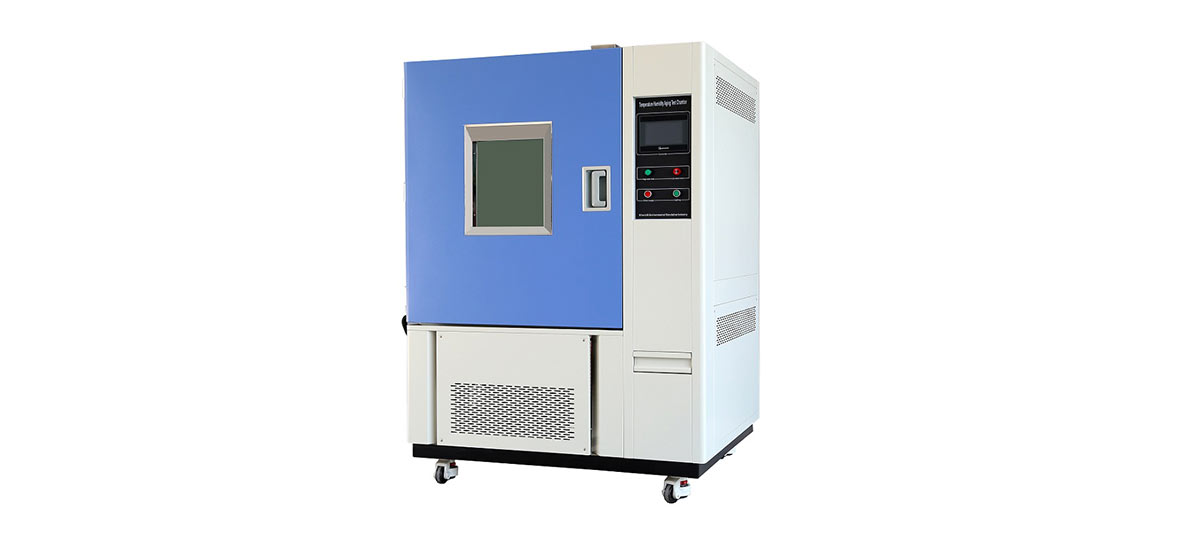To understand the importance of humidity testing, one need only look at a map of the United States. We need products that work in all climates. The phone should work just as well in the dry heat of the Arizona desert and the high humidity of the Atlantic coast. The same goes for life-saving medical equipment, cars, airplanes, and more.
The company environmental tests these products under controlled conditions to confirm that they work as designed and to understand their points of failure. By doing this, these companies can set expectations for consumers or work to fix potential flaws before going public. Here’s what you need to know about humidity test chambers.
1. What is a humidity test chamber?
Humidity test chambers are a mechanism for creating different environments that allow manufacturers to test their products under the harshest conditions. It also allows them to see how their products react to changes in humidity. Manufacturers are able to test various parameters of their products under the harshest conditions.
The purpose of the humidity chamber is to test the effects of different environments on the product to determine how long it will be useful and at what point it will fail. The data collected helps engineers tweak their designs and choose more resilient materials. Different kinds of humidity chambers allow testing to be done in a static or dynamic state, depending on the data required and the type of product. During extended testing, humid chambers are used to determine how samples react to elevated humidity levels.

2. How does the humidity chamber work
The two factors that affect product stability are temperature and humidity, with humidity being the second most destructive factor. For this reason, manufacturers test their products for humidity effects, since fluctuations in humidity can cause expansion and contraction. Water baths, nebulizers, and steam generators are the three basic methods of creating artificial humidity. Chambers in the form of AGREE are also used to test humidity as well as temperature changes and vibrations.
1) Steam generator
The steam generator has immersion heaters that heat the water in the cabin. When steam is produced from a tank of water, it rises to the top of the room where the heater is located to create humidity. A CNC-programmed control panel allows the steam generator chamber to generate heat from 300°C to 1300°C. The main benefit of a steam generator humidity chamber is its ability to generate high volumes of moisture with consistent high-quality water vapor.
2) Atomizer Test Chamber
The atomizer test chamber has a nozzle that sprays atomized water as a means of generating moisture and humidity. As water passes through a room heater, it is heated to create humidity. This nebulizer test box produces a large amount of moisture and is simple to use.
3) Water bath test chamber
The working principle of the water bath test chamber is the same as that of the steam generator, without a closed box. A small water bath is housed in a hybrid plenum with a heater. As air enters the component, it passes through the bath, where it absorbs water vapor. This form of the chamber provides a quick response because it uses a small amount of water and does not require the temperature of the water to be at boiling point.
4) Consent laboratory
AGREE is the military acronym for Advisory Group for Reliability of Electronic Equipment. AGREE test chambers have the same features as all humidity test chambers with the added feature of being able to perform vibration testing while testing atmospheric conditions. They were widely used in the early to mid-1980s at the request of the US military. This type of chamber is specially designed to accommodate shaker or shaker attachments.
5) Two temperature method
A water spray area with a tightly controlled temperature (dew point) is used to direct air returning from the conditioned area. Adjust water spray to maintain dew point temperature at target conditions. As the air passes through the water mist, it is cooled to the temperature of the water and is nearly saturated.
The air then leaves the spray chamber through a demister, which removes any excess water vapor and mixes with the air that bypasses the spray area. After passing through an electric heater, which heats the air to the desired dry bulb temperature, the air is returned to the conditioned space. This process provides very precise humidity control. The system does not differentiate between humidification and dehumidification and always set the dew point and reheats.

3. Types of Humidity Chambers
Humidity chamber types and designs vary depending on the type of testing to be done and the size of the part. There are test chambers that can be placed on a shelf to test the effect of humidity on small components. On the other hand, the walk-in and drive-through room is large enough for a car and large computing systems.
In most cases, the type of cabin purchased by the customer is designed to meet the specific needs of the customer. Every industry has the requirements and types of data needed to determine the quality of its products, requiring manufacturers to design and build a wide variety of test chambers. Regardless of specific design and different sizes, there are certain standards that apply to all forms of test chambers.
1) Desktop Humidity Chamber
Benchtop test chambers are a cost-effective method of product testing. They are used to test smaller components such as electronics, sensors, or mobile phones. They are made for research labs or small businesses. The size of benchtop test chambers ranges from 0.89 cubic feet to 5.5 cubic feet. They can have the same basic functions as larger units in a more compact size.
2) Entry humidity chamber
Compared to bench-top models, reach-in test chambers have a smaller footprint and are more versatile. They are vertically configured for easy access but are completely sealed during testing. Reach models are available in various sizes to match the available space. For convenience, they are designed with casters or wheels.
3) Walk-in humidity chamber
While humidity chambers are large enough to walk in, they are specifically designed to meet location and temperature requirements. Walk-in test chambers can be modular, they can be installed as a single unit or built on-site according to the needs of the customer.
In the case of walk-in humidity chambers, some units may require highly sophisticated steam distribution and flow systems to ensure the uniformity of the required conditions. Other walk-in rooms have simple ductwork to provide even airflow. In the automotive, electronics, and battery industries, walk-in chambers are widely used.

4) Drive-In Humidity Chamber
The main purpose of an onboard test chamber is to test a vehicle under several atmospheric and environmental conditions to determine its lifespan and durability. Like walk-in rooms, drive-in rooms must be designed to meet the needs of the client, which is primarily the automotive company.
The program in the car interior tests all moving parts of the vehicle, including doors, windows, switches of all types, lights, and knobs. An essential feature of the drive room is to test the endurance of the motor in various climatic conditions.
5) Science laboratory
Science test rooms are much like any other kind of test room, used to create mini environments. The purpose of a scientific laboratory is to examine specimens for potential flaws or problems. The collected data is crucial for the development of future products in the food science, pharmaceutical, and electronics industries.
The type of test method varies from simple high temperature to extreme humidity. The main purpose of a scientific laboratory is to complete the testing of specimens on-site, rather than sending specimens to a laboratory. Laboratory test chambers are used to create various environmental conditions such as corrosion testing and biological research.
4. Humidity Chamber Application
Industry uses environment test chambers to determine the effect of different weather conditions on the physical, chemical, and mechanical properties of components, parts, and assemblies. These tests are conclusive
1) Car
The main function of a humidity chamber for the automotive industry is to simulate weather conditions by pumping air filled with hot, humid air into the chamber. Whether a vehicle can withstand harsh environments is a critical issue for automakers. Ensuring that a vehicle can withstand all types of weather is important to the longevity of the vehicle and the safety of its occupants. There are several types of humidity chambers used in the automotive industry, one that is used to test individual components and assemblies, and one that is large enough to drive a car.
2) Rubber
Rubber is greatly affected by climatic conditions. It has high tolerance but is prone to changes due to temperature and humidity. The purpose of the humidity chamber is to test how the rubber will perform at 95% humidity. Using a wet chamber, the cracking and melting properties of rubber can be determined.
3) Pharmaceutical
Humidity is an important factor in the pharmaceutical industry because it can cause rapid drug degradation, making humidity test data critical to determining drug stability. In humidity testing, the amount of water vapor applied to the room determines the parameters.
Air is made up of nitrogen, oxygen, and other elements. Between these elemental molecules is water. The ratio of the molecules to the water contained in the molecules is the humidity. When the air is heated, the molecules separate, leaving more room for the water. This is the factor tested in the humidity chamber as the temperature increases. The data provided let the researchers know at what temperature humidity can destroy or cause the drug to deteriorate.
4) Plastic
Exposure to moisture and humidity can cause the plastic to discolor, crack the surface, and become brittle. Testing for these factors is important because they can cause plastic products to fail. In most cases, plastics are subjected to heat and humidity cycles, which are dictated by the durability requirements of the product.
Automakers have a set of standards and requirements for their plastic parts. In humid chambers, extreme conditions are replicated to examine how product components respond. The location of the part in the vehicle determines the severity of the test.
5) Electronic product
An important aspect of the production of electrical components and complete systems is determining the moisture conditions that lead to component failure. Test conditions varied between 60% and 85% humidity. The purpose of the test is multi-faceted and used to determine the performance of the product under storage, transportation and harsh operating conditions.
When testing electronics, it is not necessary to check for humidity at low temperatures. When the temperature rises above 50°C, humidity becomes an important factor affecting product performance. In this case, the humidity of the condensate on the electronic equipment must be measured.
6) Aerospace
Much of the testing of aerospace products is similar to the testing of electronic components because aerospace instruments are subject to harsh conditions. Due to exposure to different climatic conditions, one of the tests used for aerospace products is thermal cycling, in which a component is placed into humid and dry atmospheres in rapid succession.
The length of exposure depends on how and the type of part used. For aerospace products, manufacturers must adhere to a strict set of standards. Many of these coincide with those established for the military.
7) Military
Testing conditions for military products include wind, rain, dust, and extreme heat. In a humidity chamber, high-humidity atmospheric conditions can be replicated in a controlled environment to evaluate a weapon’s resistance to harsh conditions.
U.S. defense standards, or military standards, are identified by codes denoted by MIL-STD, MIL-SPEC, or MilSpecs. Compliance with these specifications ensures that military products meet the required specifications in terms of reliability, compatibility, and interoperability. In the case of humidity, standards define the correct heat-to-humidity ratio for how to use a component, mechanism, or assembly. The conditions of the test vary depending on the specified environment. The specific regulation on humidity is MIL-STD 810 G, which applies to materials that will be deployed in warm or humid environments.
8) Medical
All instruments and equipment used for medical purposes must be thoroughly tested before being offered or sold. Just like the pharmaceutical industry, the healthcare industry must adhere to strict government guidelines, standards, and regulations. These limits apply to equipment used to test medical devices

5. How to choose a humidity chamber
The decision to conduct in-house testing has several variables, including the size of the company, the types of products produced, quality control, and cost. Once you decide to buy a test chamber, there are other factors to consider. For large companies with specific goals, the choice of test room is based on scientific research and customer needs. As the company grew and expanded, it discovered that it could better serve its customers by doing in-depth research on its products.
1) Space
The size of the available footprint a company has is a guiding factor when deciding to purchase a test chamber. Test chamber manufacturers work with their customers to ensure that the test chambers they purchase are suitable for the space available and the needs of the customer.
2) Temperature
Temperature is an important part of a humidity chamber as it is necessary for the generation of steam and humidity. Temperatures of 200°C are common in most chambers. Factors affecting the temperature range to be achieved are the structure of the chamber and its stability.
3) Water supply
Humidity is determined by the design of the test chamber. Just as important as this, it is also critical to have some form of drainage or means of removing the water

6. Humidity Chamber Specifications and Standards
Humidity chambers are governed by countless agencies, organizations, committees, and government regulations. Tougher regulations cover pharmaceuticals, medical suppliers and food production. Some modifier groups are listed and described below.
1) Institute of Environmental Science and Technology
Its purpose is to guide professionals through international regulations and standards. It has educational programs on environmental testing, test reliability, and other techniques. Members of the association collectively publish industry best practices.
2) International Organization for Standardization (ISO)
ISO is a highly respected international standards-setting organization composed of representatives from different countries. ISO standards for humidity chambers include:
- ISO 10605 – Testing of electrical disturbances in vehicles induced by humidity test conditions.
- ISO 16428: 2005 – Standard for testing surgical implants.
- ISO 16525-7:2014 – Standard for testing adhesives.
- ISO 7137: 1995 – Test standard for airborne equipment.
- ISO 9022-20 – 2015 Optical and Photonics Testing Standard.
3) Underwriters Laboratories (UL)
UL outlines acceptable processes for testing and evaluating products to determine compliance with risk, injury, and hazard criteria. The organization provides guidance and assistance in the development and testing of new products and those currently on the market.
Pharmaceuticals for human use are subjected to the technical requirements of the International Council for Harmonization (ICH). The main focus of ICH is the development and registration of medicines and their testing. The group’s goal is to create a partnership between regulators and the pharmaceutical industry.
4) Food and Drug Administration (FDA)
The FDA oversees any facility that tests food and drugs that will come into contact with the public. The main aspects of FDA involvement in humidity chambers are detailed in Q1A(R2).
Q1A(R2) – This part of the FDA standard outlines testing recommendations for drugs, various substances, and products, including test durations for temperature, humidity, and climatic zones. The purpose of the test recommendations is to provide evidence of the stability and quality of the product under various environmental conditions.
5) ASTM International (ASTM)
ASTM was one of the first organizations to establish product testing standards and is a member of the ISO. It includes test standards for thousands of industries, from aerospace and chemical to medical devices and telecommunications equipment.
6) International Electrotechnical Commission (IEC)
The IEC sets standards for the electronics and electrical industries. IEC 60068 describes environmental testing methods for electronic products. The described method is a method for evaluating how electrical and electronic equipment should react under harsh environmental and test and measurement conditions.
7. Conclusion
Humidity chambers are a mechanism for creating different environments that allow manufacturers to test their products under the harshest conditions. It also allows them to see how their products react to changes in humidity. Manufacturers are able to test various parameters of their products under the harshest conditions. Different kinds of humidity chambers allow testing to be done in a static or dynamic state, depending on the data required and the type of product.
In most cases, humidity chambers are designed, manufactured, and produced to suit the setup required by the customer. Humidity chambers are used by industry to determine the effect of different weather conditions on the physical, chemical, and mechanical properties of assemblies, parts, and assemblies. In order to provide accurate and reliable data on the many factors that can cause product failure, humidity chambers are built from durable and reliable materials.
